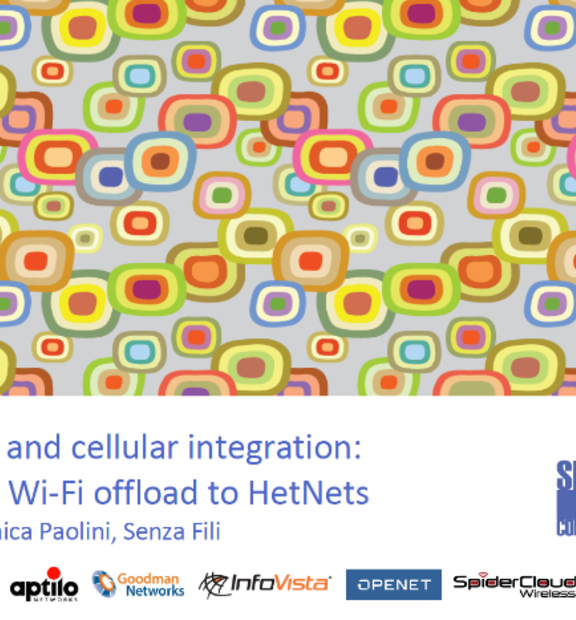As mobile networks become denser, and we populate them with a layer of Wi-Fi and cellular small cells, ideally we could simply place those new elements where more capacity is needed, doing minimal network planning or coordination with existing infrastructure. While this approach may shorten deployment time and save on initial costs, though, it will not work. Network planning becomes more important — not less — as networks grow in complexity. Even self-organizing networks (SON) — which give mobile operators a powerful tool for managing traffic and interference — cannot compensate for bad placement of RAN elements.
What can go wrong? We looked at this issue in a recent report on Wi-Fi and cellular integration and discussed it in the accompanying interview with InfoVista.
The placement of small cells underneath the macro layer plays a crucial role in determining the capacity of the combined macro-cell and small-cell layers. Small cells need to be strategically placed close to where subscribers concentrate, and in locations with an appropriate RF profile to maximize the capacity injection that small cells are expected to provide — both in providing additional capacity density within their coverage area, and in freeing up highly-valuable macro capacity by offloading traffic.
 In a macro-only environment, interference is mostly at the cell's edge. In a small-cell deployment — where cells have multiple interfaces (cellular and Wi-Fi) — there is greater interference of overlapping and adjoining RAN elements, and it has to be managed if spectrum bands are shared, as is often the case. From an RF planning perspective, if small cells use the same band as the macro cells, it is important to consider the impact of adding each small cell — both the network capacity it brings and the reduction in macro capacity due to interference — and relate that to operational constraints.
In a macro-only environment, interference is mostly at the cell's edge. In a small-cell deployment — where cells have multiple interfaces (cellular and Wi-Fi) — there is greater interference of overlapping and adjoining RAN elements, and it has to be managed if spectrum bands are shared, as is often the case. From an RF planning perspective, if small cells use the same band as the macro cells, it is important to consider the impact of adding each small cell — both the network capacity it brings and the reduction in macro capacity due to interference — and relate that to operational constraints.
For instance, indoor small cells generally create less interference, but mobile operators may find it more difficult to install and manage indoor cells. A shorter small-cell radius typically results in lower interference levels, so it is crucial to place the cells where subscribers use data most heavily. Or, a small cell in an area where coverage from the macro layer is limited (or is close to the macro-cell edge) will generate less interference. These are examples of how the same equipment installed differently within the same footprint can have a different impact on network capacity and, more generally, on network performance.
However, even if the placement of small cells is optimized to minimize interference, it does mobile operators no good if the small cells are not close to where subscribers use their mobile apps. Network capacity increases, but the growth in traffic volume may be only modest. As a result, the per-bit costs of small cells rise, and in turn this limits the cost-effectiveness of small cells. Hence, the RF planning has to be done in sync with an analysis of where subscribers use mobile data. This is not a trivial endeavor, because subscriber location is not necessarily a good predictor of data usage. There are locations where, on average, subscribers spend more time than in others, but do not use the mobile network as intensely.
In addition to having this awareness of demand distribution across the footprint, RF planning must consider the impact on operations (e.g., the location of small-cell installations) and the per-bit costs (e.g., the impact of small-cell location on cost). There is no simple recipe that will work for all mobile operators, but rather there are many tradeoffs to consider. Mobile network planning is not getting any easier; on the contrary, to extract all the capacity needed from the addition of carrier Wi-Fi and cellular small cells, network planning is becoming even more important.










